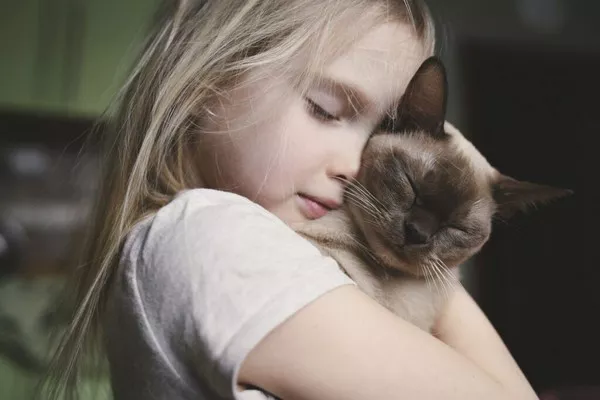Training a rabbit to come to you can be a rewarding and enriching experience for both you and your furry friend. Unlike dogs, rabbits are more independent and can be a bit more challenging to train due to their natural instincts and behaviors. However, with patience, consistency, and understanding of rabbit behavior, you can successfully train your rabbit to respond to your call. This article will guide you through the essential steps, providing insights into rabbit psychology, training techniques, and tips to ensure a positive experience for your rabbit.
What Are the Natural Instincts of Rabbits?
Rabbits are prey animals, and their natural instincts are geared towards survival. In the wild, rabbits are constantly alert to potential dangers and are inclined to flee at the first sign of trouble. This inherent skittishness can make training a bit more challenging but not impossible.
Rabbits are also highly social creatures that thrive on interaction with their peers and, in a domestic setting, their human caregivers. Understanding these instincts is crucial when training your rabbit. They are naturally curious and will be more inclined to approach you if they feel safe and secure.
How Do Rabbits Communicate?
Rabbits communicate through a combination of body language and sounds. Recognizing these signals can help you understand your rabbit’s mood and receptivity to training. Key behaviors to watch for include:
Ears: Position and movement of ears indicate their attention and emotions. Forward-facing ears suggest curiosity, while flattened ears may indicate fear.
Body Posture: A relaxed rabbit will have a loose posture, while a tense, hunched position suggests fear or discomfort.
Vocalizations: While relatively quiet, rabbits can make various sounds such as purring (contentment), thumping (alarm), and grunting (irritation).
By paying attention to these signals, you can gauge when your rabbit is most receptive to training.
What Are the Essential Supplies for Rabbit Training?
Before starting the training process, gather the necessary supplies to make the experience smooth and effective. You will need:
Treats: Choose healthy treats that your rabbit finds irresistible. Fresh vegetables, small pieces of fruit, or commercial rabbit treats can be used. Avoid overfeeding treats to prevent obesity.
Clicker: A clicker can be a useful tool in marking desired behaviors.
Safe Training Area: A quiet, enclosed space where your rabbit feels safe and secure is essential for effective training.
How Do You Create a Positive Training Environment?
Creating a positive training environment is crucial for your rabbit’s success. Ensure the training area is free from distractions and potential hazards. Spend time bonding with your rabbit before starting formal training sessions. This will help establish trust and make your rabbit more responsive to your commands.
Rabbit Training Techniques
What Is Positive Reinforcement and How Does It Work?
Positive reinforcement is the most effective method for training rabbits. This involves rewarding your rabbit for displaying the desired behavior, making it more likely they will repeat that behavior in the future. Consistency is key; always reward your rabbit immediately after they perform the desired action.
How to Start with Basic Training?
Establish a Cue: Choose a specific word or phrase, such as “Come” or “Here,” that you will use consistently to call your rabbit.
Use Treats as Incentives: Hold a treat in your hand and let your rabbit see it. Use the chosen cue and gently coax your rabbit towards you. When they approach, immediately give them the treat and praise.
Repeat and Reinforce: Practice this several times a day in short sessions to avoid overwhelming your rabbit. Consistency will help your rabbit associate the cue with the reward.
What Is the Role of a Clicker in Training?
A clicker can be an effective tool for training rabbits. It acts as a marker to signal to your rabbit that they have performed the correct behavior. The process involves:
Charge the Clicker: Before using the clicker for training, you need to “charge” it. This means clicking the device and immediately giving your rabbit a treat. Repeat this several times until your rabbit associates the click with a reward.
Use the Clicker During Training: When your rabbit responds to your cue and starts to come towards you, click the device and then give them a treat. This reinforces the behavior and helps your rabbit understand what you want them to do.
Advanced Rabbit Training Tips
How to Gradually Increase Distance?
Once your rabbit consistently responds to your cue in a small, enclosed space, you can begin to increase the distance:
Gradual Increases: Slowly increase the distance between you and your rabbit during training sessions. Start by moving a few steps back and calling your rabbit. Reward them when they come to you.
See Also: Can I Give My Rabbit Probiotics?
Change Environments: Practice in different areas of your home to generalize the behavior. This helps your rabbit learn to come to you regardless of the environment.
How to Introduce Distractions?
As your rabbit becomes more proficient, you can introduce mild distractions to ensure they respond to your cue in various situations:
Controlled Distractions: Start with minor distractions, such as having another person in the room or a low-volume TV in the background.
Increase Distraction Level: Gradually increase the level of distraction by adding more people, sounds, or even other pets. Reward your rabbit for coming to you despite the distractions.
What If Your Rabbit Is Reluctant?
Some rabbits may be more reluctant to come when called. In such cases:
Patience and Persistence: Be patient and persistent. Never punish your rabbit for not responding; instead, continue to use positive reinforcement.
Adjust Your Approach: Try different treats or training times when your rabbit is more active and receptive.
Consult a Professional: If you encounter persistent difficulties, consider consulting a professional rabbit trainer or a veterinarian who specializes in rabbit behavior.
Ensuring Your Rabbit’s Health and Well-being
How Important Is a Proper Diet?
A balanced diet is crucial for your rabbit’s health and responsiveness to training. Ensure your rabbit’s diet includes:
Hay: The primary component of a rabbit’s diet, providing necessary fiber for digestion.
Fresh Vegetables: Leafy greens such as romaine lettuce, kale, and parsley are excellent choices.
Pellets: High-quality rabbit pellets provide essential nutrients.
Fresh Water: Always have fresh water available for your rabbit.
Avoid giving your rabbit too many sugary treats or unhealthy foods, as these can lead to obesity and other health issues.
What Are Common Rabbit Health Issues to Watch For?
Regular health checks are vital to ensure your rabbit remains healthy and able to participate in training sessions. Common health issues include:
Dental Problems: Overgrown teeth can cause pain and eating difficulties. Ensure your rabbit has access to hay and appropriate chew toys to wear down their teeth.
Gastrointestinal Stasis: A potentially life-threatening condition where the digestive system slows down or stops. Signs include loss of appetite, lethargy, and small or absent fecal pellets. Immediate veterinary attention is required.
Parasites: Regularly check your rabbit for signs of parasites such as fleas, mites, and worms. Consult your vet for appropriate treatments and preventatives.
How to Keep Your Rabbit Mentally Stimulated?
Mental stimulation is essential for your rabbit’s well-being and can aid in training:
Toys and Enrichment: Provide a variety of toys, tunnels, and safe chew items to keep your rabbit engaged.
Interactive Play: Spend time playing and interacting with your rabbit daily. This strengthens your bond and keeps them mentally active.
Varied Environments: Allow your rabbit to explore different safe areas of your home. This variety can prevent boredom and encourage curiosity.
Building a Strong Bond with Your Rabbit
Why Is Bonding Important?
A strong bond between you and your rabbit is the foundation of successful training. Building trust and a positive relationship will make your rabbit more inclined to respond to you and enjoy the training process.
How to Spend Quality Time with Your Rabbit?
Daily Interaction: Spend time with your rabbit every day, engaging in gentle petting, grooming, and play. Rabbits enjoy routine, so try to interact with them at the same times each day.
Gentle Handling: Always handle your rabbit gently and with respect. Avoid sudden movements and loud noises that could startle them.
Observe and Respond: Pay attention to your rabbit’s body language and behavior. Respond to their needs and preferences to build trust and a positive association with you.
How to Recognize and Respect Your Rabbit’s Limits?
Understanding and respecting your rabbit’s limits is crucial for maintaining a positive relationship:
Know When to Stop: If your rabbit shows signs of stress or fatigue during training, stop the session and give them a break. Signs of stress include heavy breathing, hiding, or aggressive behaviors.
Adjust Expectations: Every rabbit is unique, and some may take longer to train than others. Be patient and adjust your training methods to suit your rabbit’s individual needs and personality.
Conclusion
Training a rabbit to come to you is a rewarding process that requires patience, understanding, and consistent positive reinforcement. By understanding your rabbit’s natural behavior, creating a positive training environment, and using effective training techniques, you can successfully teach your rabbit to respond to your call. Additionally, ensuring your rabbit’s health and well-being, providing mental stimulation, and building a strong bond are essential components of a successful training regimen. With dedication and love, you and your rabbit can enjoy a strong, trusting relationship that enhances both of your lives.
Related Topics:


























